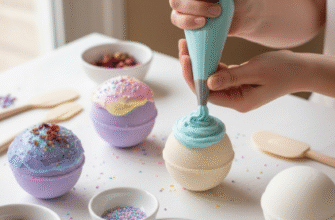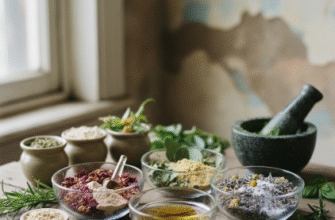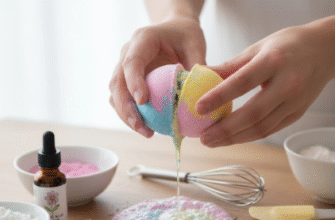Finding the right way to exfoliate your face can feel like walking a tightrope. You want to slough away dullness and reveal fresh skin, but go too harsh, and you risk irritation, redness, and micro-tears. Many commercial scrubs rely on ingredients that can be surprisingly abrasive, like large sugar crystals or sharp-edged crushed nutshells. If you’re searching for a kinder, gentler approach rooted in natural ingredients, look no further than your kitchen pantry – specifically, towards almonds.
Almond meal, simply finely ground almonds, offers a beautifully soft yet effective texture for facial exfoliation. It provides a much milder alternative to common scrub bases, making it a fantastic option for those whose skin protests against more aggressive methods. This isn’t about stripping your skin; it’s about gently buffing away what no longer serves it, namely dead skin cells that can accumulate and lead to a lackluster complexion.
Understanding Almond Meal vs. Almond Flour
Before we dive in, let’s clarify a common point of confusion: almond meal versus almond flour. While both are made from ground almonds, there’s a key difference in texture. Almond meal is typically ground with the skins left on, resulting in a coarser, slightly more textured powder. Almond flour, on the other hand, is usually made from blanched almonds (skins removed) and ground much finer, often resembling traditional wheat flour. For exfoliation purposes, almond meal is generally preferred because its slightly larger particle size provides the gentle friction needed to lift away dead cells without being overly harsh. Almond flour might be too fine to offer significant exfoliating action.
Why Choose Almond Meal for Your Face?
The appeal of almond meal goes beyond its gentle texture. Here’s why it stands out:
- Naturally Soft Abrasive: The particles in almond meal are small, relatively uniform, and less jagged than many synthetic beads or natural fragments like crushed pits. This means they can effectively dislodge dead skin without scratching or irritating the healthy skin underneath.
- Subtle Nourishment: Almonds contain natural oils and Vitamin E. While a quick scrub won’t deliver deep therapeutic benefits like a leave-on treatment, the presence of these components contributes to a softer, smoother feel immediately after rinsing. The natural oils can help buffer the exfoliation process, preventing that tight, stripped feeling some scrubs leave behind.
- Customizable Base: Almond meal is incredibly versatile. It readily mixes with various liquids and ingredients, allowing you to tailor your scrub to your skin’s specific needs on any given day.
- Accessibility and Simplicity: You can easily find almond meal in most grocery stores or health food shops, or even make your own by pulsing raw, unsalted almonds in a food processor (just be careful not to over-process into almond butter!). It’s a straightforward, single-ingredient base.
The Gentle Touch: Benefits of Almond Meal Exfoliation
Regular, gentle exfoliation with almond meal can contribute positively to your skin’s appearance and feel. By removing the build-up of dead skin cells from the stratum corneum (the outermost layer of the skin), you can expect:
- Brighter Appearance: Dead cells can scatter light unevenly, contributing to a dull look. Removing this layer allows the fresher skin underneath to reflect light more uniformly, resulting in a brighter, more radiant appearance.
- Smoother Texture: The accumulation of dead cells can make the skin feel rough or uneven. Gentle buffing helps to smooth out the surface texture, making it feel softer to the touch.
- Enhanced Product Absorption: When the surface layer of dead cells is reduced, moisturizers, serums, and other skincare products applied afterwards may be absorbed more effectively, allowing their ingredients to work more efficiently.
- Reduced Risk of Irritation: Compared to harsh chemical peels or scrubs with large, sharp particles, almond meal significantly lowers the risk of causing redness, inflammation, or micro-damage to the skin barrier.
- A More Refined Look: Over time, consistent gentle exfoliation can help minimize the appearance of clogged pores simply by keeping the surface clear of debris.
Crafting Your Own Gentle Almond Meal Scrub
Making an almond meal scrub at home is incredibly simple. The basic principle involves combining almond meal with a liquid or binder to create a paste.
Basic Recipe:
Ingredients:
- 1-2 tablespoons Almond Meal
- Enough liquid to form a paste (start with 1-2 teaspoons and add more as needed)
Liquid Options & Variations:
The liquid you choose can add subtle extra benefits or tailor the scrub’s consistency:
- Water: The simplest option, creates a basic scrub suitable for most skin types.
- Rosewater: Adds a pleasant scent and is often considered soothing. Good for normal or slightly sensitive skin.
- Milk or Yogurt (Plain): Contains lactic acid (a very mild alpha-hydroxy acid) which adds a subtle brightening boost. The fats in milk/yogurt also make the scrub creamier and more hydrating, good for drier skin types.
- Honey (Raw if possible): A natural humectant, meaning it draws moisture to the skin. It also has a thicker consistency, creating a richer scrub. Suitable for dry or normal skin. Ensure it’s runny enough to mix well.
- Carrier Oil (Jojoba, Sweet Almond, Olive): Just a few drops can significantly increase the scrub’s moisturizing properties, making it ideal for very dry or mature skin. Use sparingly to avoid an overly greasy feel.
To Make: Simply combine the almond meal and your chosen liquid in a small bowl. Mix until you achieve a spreadable paste – not too runny, not too thick and dry.
How to Use Your Almond Meal Scrub Effectively and Safely
Using your homemade scrub correctly is key to reaping the benefits without causing harm:
- Cleanse First: Always start with a clean face. Use your regular cleanser to remove makeup, dirt, and oil. Pat your skin partially dry – leaving it slightly damp helps the scrub glide more easily.
- Apply Gently: Scoop a small amount of the scrub onto your fingertips. Apply it to your damp face, avoiding the delicate eye area.
- Massage Softly: Using very light pressure, massage the scrub into your skin using small, circular motions. Focus on areas prone to congestion or dullness, like the forehead, nose, and chin, but always be gentle. Let the texture of the almond meal do the work; you don’t need to press hard. Massage for about 30-60 seconds.
- Rinse Thoroughly: Rinse your face completely with lukewarm water. Ensure all traces of the almond meal are gone.
- Pat Dry: Gently pat your skin dry with a clean, soft towel. Avoid rubbing.
- Moisturize: Immediately follow up with your usual serum and/or moisturizer to hydrate the newly exfoliated skin.
Frequency:
How often should you exfoliate? For most people, 1-2 times per week is sufficient for gentle exfoliation with almond meal. Listen to your skin – if you notice any redness or sensitivity, reduce the frequency or take a break. Over-exfoliation can damage the skin barrier, leading to problems.
Important Considerations Before You Scrub: Always perform a patch test before applying any new homemade concoction to your entire face, especially if you have sensitive skin or known allergies (like nut allergies!). Apply a small amount to an inconspicuous area, like behind your ear or on your inner wrist, wait 24 hours, and check for any reaction. Remember, gentleness is crucial; applying too much pressure can negate the benefits of using a mild exfoliant like almond meal. Make fresh batches of your scrub frequently, as homemade mixtures without preservatives can spoil or grow bacteria.
Final Thoughts on Almond Meal Exfoliation
Incorporating an almond meal scrub into your skincare routine offers a wonderfully natural and gentle way to maintain a smooth, bright-looking complexion. It bypasses the harshness of many synthetic or overly abrasive natural exfoliants, providing effective buffing without stripping or irritating the skin when used correctly. Its versatility allows for easy customization, letting you create a simple yet satisfying treatment right in your own kitchen. Remember the importance of patch testing, using gentle pressure, and listening to your skin’s feedback. By embracing this simple, time-tested ingredient, you can achieve noticeable softness and radiance with a kinder touch.








